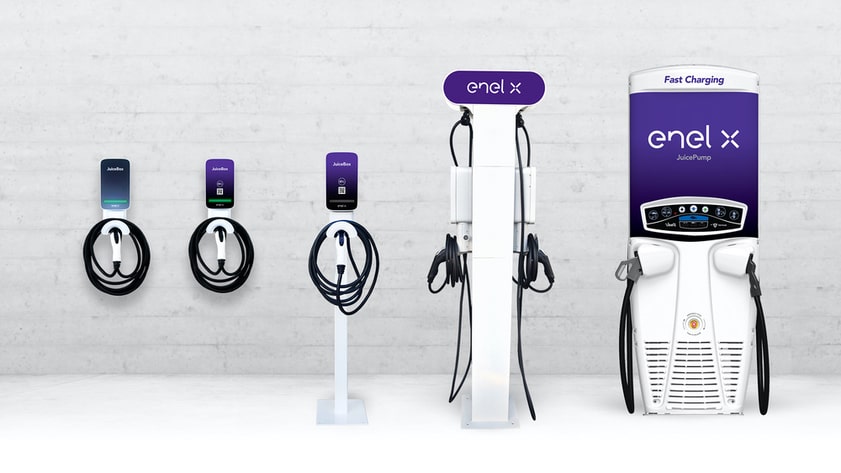How To Claim An Electric Vehicle Tax Credit

Looking to switch from a gas-powered motor vehicle to an electric vehicle? Before making the decision to purchase an electric car, most buyers will come across information about electric vehicle tax incentives during the pre-purchase research process. Incentive programs are intended to help subsidize the higher upfront costs of electric vehicles and incentivize drivers to ditch motor vehicles in favor of plug-in electric or battery electric vehicles. This is a part of an ever-growing trend towards EV adoption that will reduce pollution and greenhouse gas emissions. Although federal and localized incentives can greatly reduce the upfront costs of an electric car, buyers may be unclear on how to claim these benefits and the process of filing for an income tax credit. In order to address confusion, this guide below provides important background information about electric vehicle incentives and will take you step by step through the process to claim your well-deserved electric car tax credit.
EV Tax Credits: What You Should Know
In an effort to encourage drivers to switch from motor vehicles to electric and alternative fuel vehicles, The Energy Improvement and Extension Act of 2008 granted tax credits of up to $7,500 for new, qualified EVs and a tax credit of $2,500, plus $417 for each kWh of battery capacity over 4 kWh, for qualified Plug-in Hybrid electric vehicles. The full tax incentive is available for all EV and plug-in hybrid models until an auto manufacturer sold 200,000 electric vehicles. Once sales exceeded 200,000 units, the tax credit enters a phase-out period, in which models from the given automaker are eligible for 50% of the full tax credit amount ($3,750) for 6 months. After those 6 months, the tax credit is reduced by another 50% to $1,875 for another 6 months. 1 year after the 200,000 unit ceiling is reached, the tax credit is phased out completely. Due to the huge success of GM and Tesla EVs, these automakers have already reached their sales cap and are currently phased out of the federal program. Remaining tax credit eligibility for all available EV and hybrid vehicle models can be found here.
How to Claim your Federal Tax Credit
- In order to claim the federal tax incentive for your EV, it is important to first understand the eligibility criteria:
- ✓ You are the owner of the qualifying vehicle.
- ✓ If the vehicle is leased, only the lessor and not the lessee, is entitled to the credit.
- ✓ You placed the vehicle in service during your tax year.
✓ The vehicle is manufactured primarily for use on public streets, roads, and highways.
✓ The original use of the vehicle began with you.
✓ You acquired the vehicle for use or to lease to others, and not for resale.
✓ You use the vehicle primarily in the United States.
Special condition: Enter 100% unless the vehicle was manufactured by Tesla or General Motors (Chevrolet Bolt EV, etc.)
To claim your federal EV tax credit, you must fill out Form 8936 along with Form 1040. If you purchased your EV more than 3 years ago and the vehicle is still eligible for the tax credit, you can file an amended return to claim your credit.
Utility and State EVSE Rebates
In addition to the federal EV tax rebate, state governments and utilities also offer incentives to offset the purchase price of your new electric vehicle. As of January 2020, the number of EV registrations has increased over 500% in the last five years and much of this growth is due to state and local tax incentives bolstering the federal tax credit. According to a study by the National Renewable Energy Laboratory, rebates, tax credits or other incentives have long been one of the major factors influencing a buyer’s decision to go electric. This study found that for every $1,000 of tax credits, BEV sales improved 5.3%, while similar rebates increased sales by 7.7%.
In Colorado, drivers are eligible for a state tax credit of up to $4,000 on the purchase of a new EV or Plug-in Hybrid Electric Vehicle. The Colorado state tax credit will decrease to $2,500 in 2021 and continue to decline until it is phased out entirely at the end of 2025. In California, the Clean Vehicle Rebate Program (CVRP) offers rebates of up to $7,000 on the purchase or lease of a new, eligible EV or PHEV.
In addition to federal and state rebates, utility programs can further reduce the cost of going electric. For example, Xcel Energy has joined forces with Mitsubishi and Nissan to offer significant rebates of $3,000 rebate on a 2019 Mitsubishi Outlander PHEV and up to a $3,500 rebate off a 2019 Nissan Leaf. This rebate program now accounts for 10% of all Nissan Leaf registrations in the state of Colorado. All utility and state rebates are only offered for a limited period of time or until funds are exhausted, so it is imperative for EV owners to act quickly and claim their EV savings today.
EVSE Tax Credits: What You Should Know
In addition to the electric vehicle tax credit, the federal government has approved an extension of the credit for alternative fuel vehicle refueling property. First implemented in 2017, the tax credit expired in 2018 and was retroactively extended through 2020, making all charging stations purchased through December 31st, 2020 eligible for the credit. This tax credit helps subsidize the installation costs of residential charging and commercial charging stations. EV charging stations purchased in 2018 through the end of 2020 are now eligible for a 30% tax credit for purchase and installation costs, up to $1,000 dollars for residential installations and up to $30,000 for commercial installations. The process of claiming a local or federal tax credit may seem daunting, but in reality, it is simple and painless. Below is our step by step guide to taking advantage of EV incentive programs, today.
Utility and Government EVSE Rebates
In addition to federal tax credits, many utilities, municipalities, and air quality districts also offer additional incentives to cover the cost of your electric vehicle charging station. In California, Los Angeles Department of Water and Power’s (LADWP) ChargeUp LA program is offering rebates of up to $500 to cover the cost of a level 2 home EV charging station and $250 to offset installation costs. Purchase here.
Municipal utilities across the golden state are also providing EV charging rebates, with programs in Sonoma, Alameda, Pasadena, Glendale, and many other cities offering rebates of up to $500 rebates for eligible level 2 charging stations, such as the JuiceBox 40. Outside of California, EV drivers across the country can save on home level 2 charging stations or receive free residential EV chargers through utility and local rebate programs. In Washington, Puget Sound Electric customers are eligible to receive a free smart level 2 charging station and rebates covering up to 75% of installation costs. Here is the full list of rebates by state.
Commercial customers can also save big on level 2 and DC fast charging stations installed at workplaces, multi-unit dwellings, and public locations. In New York, PSEG-LI offers rebates of 80% of the price, up to $4,000 per charging port, toward the purchase of up to ten Level 2 workplace EVSE units. Additionally, commercial customers in New York may also qualify for incentives through the New York State Energy Research and Development Authority’s (NYSERDA) Charge Ready NY program, which provides rebates of $4,000 per charging port for a wide range of site owners. In California, businesses in the Los Angeles area may be eligible for rebates of up to $75,000 to offset the cost of installing commercial DC Fast Charging stations through LAWDP’s commercial charging programs.
To learn more about electric vehicles and EV charging incentive programs across the country, check your eligibility and see if you qualify for savings, today!







